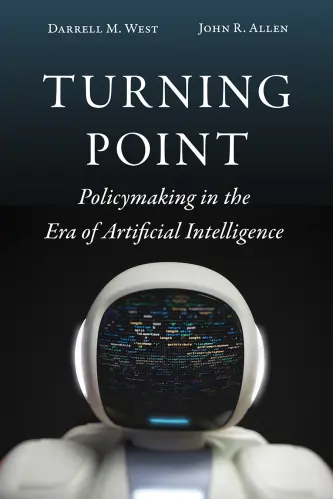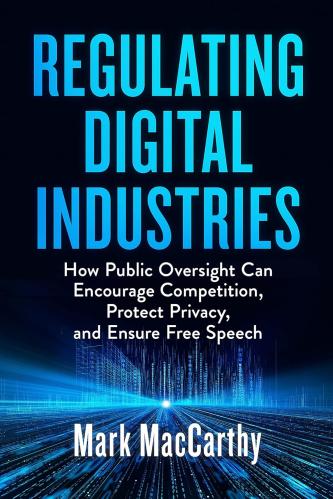Greg Ferenstein is a contractor with Tech4America, a San Francisco-based tech policy nonprofit. This blog post summarizes a report that is part of Tech4America’s ‘Future of Work’ series. A constantly updated version of the report is here.
It is possible for automation to create an economy where more people than ever before enjoy creative, high-paying work, but there will be uncomfortable tradeoffs. Skilled work could be plentiful, but new jobs are much more complex than the routine ones being replaced by robots. With new research, I argue that taking advantage of the next wave of jobs will require many people to gain part-time experience at least a few years before switching occupations and an entirely new safety net that supports carving out time during a normal 40 hour work week for side work.
That is, gig work is potentially an economy’s largest job training resource: many new jobs take over five years of experience in order to have steady hours and good pay. Governments seem hyper-focused on school-centric approaches to retraining that weave complicated credentialing schemes and city workforce programs that attempt to align community college courses with forecasts of market demand.
I believe there is a simpler solution: today, there are millions of healthcare, electrician, construction, teaching, and programming entry-level freelance jobs that are available with minimal schooling and impart valuable skills in only a few hours each month. Years of experience and a portfolio of job recommendations put workers in a much better position to transition. Only job experience itself can demonstrably help workers avoid what President Obama referred to as the “train and pray” trap of workforce education.
Indeed, all across America, there are individuals and cities thriving through technological change; a common pattern among the most resilient regions and workers is an unusual volume of mixing self-employed skilled and lower-skill wage work. Contrary to popular perceptions of the “gig economy”, several studies reveal how self-employed contract work is often used for economic security and upward mobility, offsetting unexpected expenses, helping cities rebound from the recession, and teaching valuable new skills for a smoother occupational transition.
Before I dig into the data of the new report*, I want to share one of the stories that inspired this unconventionally optimistic claim about the gig economy. A few months ago, while researching industries that I thought were decimated by technology, I looked into how travel agents fared after losing their jobs to online travel comparison websites. To my surprise, I learned that a new model of at-home self-employed agents was thriving.
I talked to Rick Thomas (not his real name), who is a middle-aged Kentucky factory worker with a full-time job at a Ford assembly plant. He tells me that “If Ford calls Today and says ‘we’re closed’, I’ll be good tomorrow.” For over 7 years, Rick has been moonlighting as a travel agent. Through friends and referrals, many contemporary travel agents get paid for concierge-like service on how plan the perfect vacation.
Thomas learned a new skill online while working full-time, secured a second stream of income, found a job he loves, and is now protected from automation in an industry that I expected to be wiped out by technology using a gig work labor model that is stereotypically a financial nightmare.
I wanted to know if workers like Thomas were the exception, so I began analyzing the handful of economic surveys and datasets that contain information about non-primary occupations (the majority of government surveys, for instance, deliberately exclude secondary occupation information).
Displaced worker income
The data confirms both the worst fears and the greatest hopes about multiple-job holding. Looking at a special supplement to the U.S. Census, the Displaced Worker survey, which collects data on people who lost their job due to plant closings or insufficient hours, we see that people who report having more than one job often fare worse, with a median income retention of 91 percent of previous weekly earnings, while the bottom 25th percentile retain just 59 percent of the income after a few years. But, a sizable portion, the top 75th percentile of workers, end up better off, earning 19 percent more per week than they would have had they not lost their job. But, what separates the income-gainers from income-losers?
The displaced worker survey shows that those with a graduate degree end up doing better if they have multiple jobs, with 62 percent earning more compared to those with only one job. This is a clue that people with higher skill levels are probably leveraging second jobs for upward mobility.
One of the richest datasets comes from Britain’s Understanding Society, which has exhaustively tracked the economic cohorts of Brits over several years, and does perhaps the best job of asking about multiple income streams. From this dataset, I looked at how people with a skilled side job differed from single jobholders who switched occupations. People with a skilled side job end up with a median income retention of 111 percent of previous earnings (with the 25th percentile retaining 67 percent and the top 75th making 295 percent).
The Understanding Society sample is much smaller than a less-detailed monthly supplement to The Current Population Survey, the Outgoing Rotation survey. I compared my findings with American data and found that people holding a skilled side job, defined as one that pays above-average wages, retained 97.7 percent of income after changing occupations, with the 25th percentile retaining 60 percent and the top 75th earning 168 percent.
This phenomenon, what economist Georgios Panos calls “skill diversification” through multiple job-holding, is indeed an economic reality for many. I think these findings confront policymakers with an uncomfortable fact: skilled jobs may be plentiful, but they take longer to learn. I think this is why government retraining programs so often appear to “fail”. Even after intensive retraining, most workers earn 10-30 percent less. But, what critics call a “failure” is a misunderstanding of just how many years it takes to learn a skilled job.
In many ways, work experience itself is the best workforce training. The gig economy is a fantastic place to get paid training. While many cities obsess over how to predict employment trends and create complex job training educational experiences, the city of San Francisco is pioneering a new gig work training program through SamaSchool, a nonprofit that trains disadvantaged residents how to begin freelancing and gain near-immediate job experience.
To learn more about how job experience could offset wage dips nationally, I asked a new technology startup, Talent Works, to comb its massive dataset of resumes and job offers to simulate how much more people would earn if they came to a new job with at least a few years of experience (such data is not readily available from public surveys).
The folks at Talent Works estimate that 5 years of part-time experience boosts wages around 54 percent–offsetting much of the median expected dip from automation job loss. This jives with the lived experience of skilled job holders in the British Understanding dataset.
Thus, displacement isn’t necessarily an economic doomsday if workers can gain job experience prior to switching occupations. But, it will require a norm of multiple job-holding into a traditional 40 hour work week, even if a side job is only a few hours a week.
Meet the new norm
A common criticism I’ve encountered while talking about this idea is many people believe that secondary jobs are both unpredictable and only for low-wage work. Both of these concerns are not supported by the data.
“Side hustles are the new norm” wrote Washington Post business reporter Abha Bhattarai. Among more privileged, educated, urbanized demographics, many people have side jobs; journalists write books, programmers do freelance work, and coastal cities are overflowing with part-time management consultants.
In America, perhaps the best data on secondary jobs comes from the Panel Study on Income Dynamics, a longitudinal dataset of households. I found that many of the fastest growing occupations, from homecare to teaching, are secondary jobs. As for the growth in instructional jobs, think of the thousands of people who teach on sites such as Lynda.com, an online educational website bought by LinkedIn for $1.5 billion. These instructors are both a huge source of skilled secondary income and also an incredible resource for the legions of self-taught workers. Indeed, a recent large survey of software developers found that 86 percent were self-taught online. Freelance is the training ground for new occupations.
Same as the old norm
The second criticism I encounter is about the unpredictability of gig work. This myth persists because critics do not account for job tenure: long-time self-employed workers hold down much more stable working hours. Using Census data, I plotted job tenure over underemployment and found that after 5 years, the number of people finding full-time hours are similar between wage and self-employed workers. About 12 percent of wageworkers are seeking full-time work in the first year on the job, while about 20 percent of self-employed are underemployed. After 5 years, that number drops by almost half for self-employed workers (12 percent) and two-thirds for wageworkers (5 percent).
And, this doesn’t capture the full picture of multiple job holders. Using aggregated banking account data, JPMorgan found that part-time online platform workers had smoother consumption volatility, since they could work extra hours to buffer unexpected expenses. For many people, gig work makes finances more secure.
As a professional writer, this has been my experience. Getting my first wage job as a business reporter was a lifeline against my otherwise unreliable freelance income. I freelanced while working as a staff reporter and eventually left my cushy job to earn more income on my own. But, it took about 5 years of freelancing to reach this point.
In fact, automated scheduling is making ostensible full-time wage work more unreliable if anything. Modern retail wage work is so erratic that Oregon recently passed a law requiring advanced notice of scheduling changes.
I see the rise of freelancing and the erratic hours of wage work as part of a common pattern. Automation is shifting workers into high-skilled work hour by hour. Skilled work is expanding through irregular hours while routine work is shrinking through irregular hours. That is, flexible gig work is the very mechanism by which automation is creating opportunity, slowly shrinking routine work and expanding creative opportunities. And, this is another uncomfortable trade-off: a skilled occupation isn’t just the job itself, but the hustle and lifelong learning that comes along with it.
I think humans will adapt well to this new reality, being more consistent with how we worked in the past. “While it might seem that long-established ways of working are being disrupted, history shows us that the one person, one career model is a relatively recent phenomenon,” writes historian Tawny Paul, a Senior Lecturer in Economic and Social History at the University of Exeter who has examined pre-20th century work diaries.
For 21st century workers, multiple job holding is still quite unusual. There are several proposals for how to make this kind of life more stable, such as portable benefits for the self-employed, or wage subsidies, which allows workers to make at least a certain portion of their main occupation income each week.
Policymakers often talk about a new kind of safety net as a way to make work as good as it was in the 20th century. I think this is unduly pessimistic. The future of work could potentially be better than ever. After the Great Depression, many Americans made a compromise: they would accept working long, tedious hours at a single employer in a job they often loathed in exchange a steady paycheck. Technology is stressing the limits of the single-employer compromise.
Taking advantage of new opportunities arising from automation will not be easy, but it may, in the end, lead to a more equal, faster growing, and inclusive and fulfilling economy.









Commentary
Automation could create a more inclusive economy through high-skilled side work
April 6, 2018